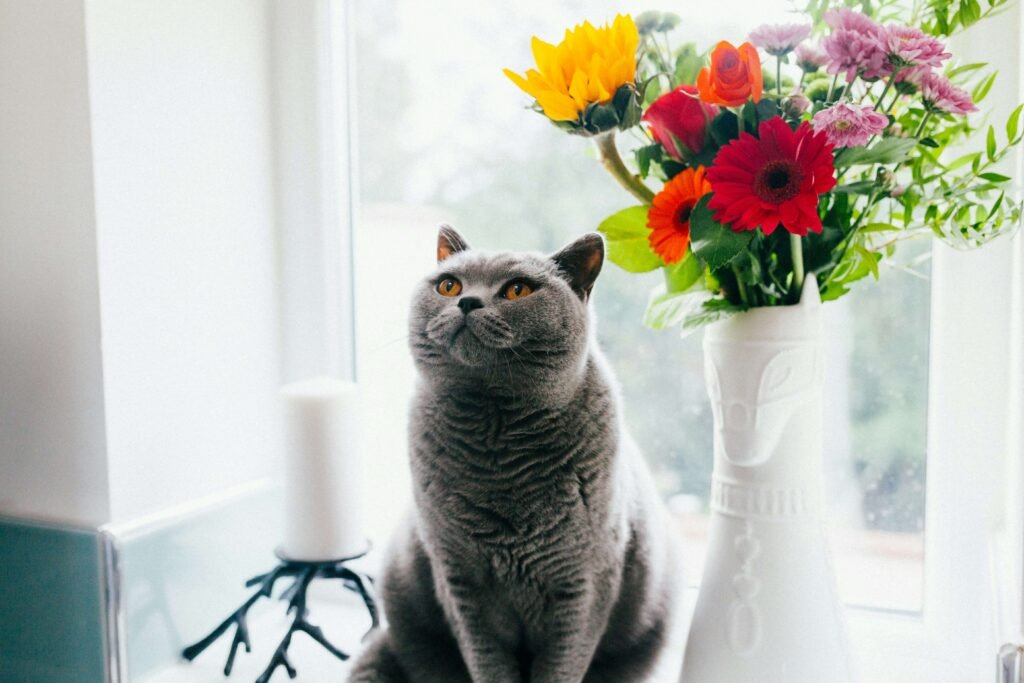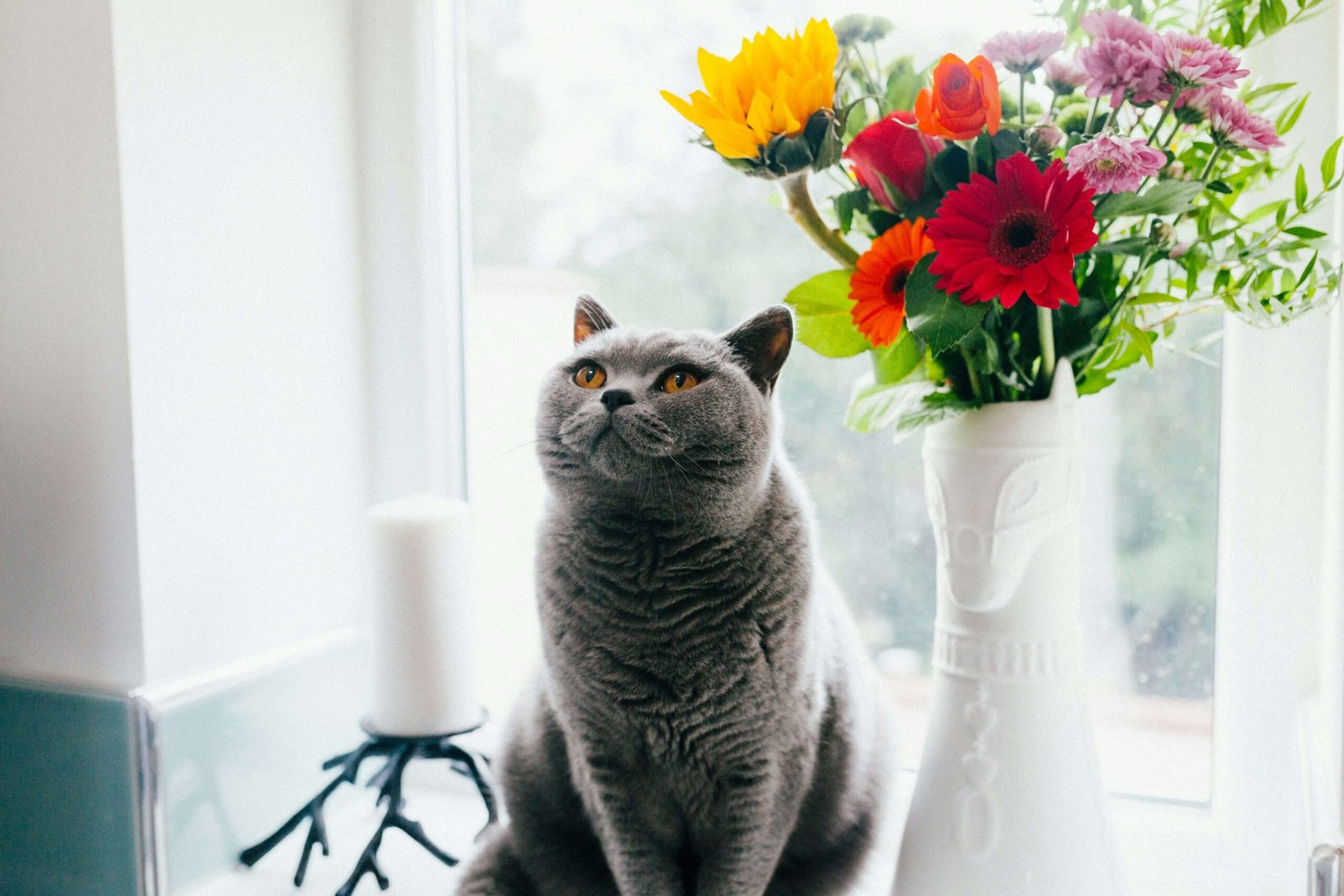Why Does My Cat Sit on My Face? Decoding Feline Behavior
Have you ever woken up to find your cat perched comfortably on your face? While it might feel like an odd or even slightly invasive habit, this behavior is more common than you think. Cats are mysterious creatures, and their actions often carry deeper meanings rooted in instinct, affection, and curiosity. From seeking warmth to marking you as their territory, there are several reasons why your feline friend chooses your face as their favorite spot. In this blog post, we’ll explore the motivations behind this quirky behavior, helping you understand your cat’s unique way of showing love (or asserting dominance). So, let’s dive into the fascinating world of cats and uncover why they love sitting on your face.
Reasons Why Cats Choose Your Face
Cats have specific reasons for choosing your face as their cozy perch. Here are some possible explanations:
Warmth and Comfort
Your face emits body heat, making it an inviting spot for your cat to snuggle up and stay warm.Familiar Scent
Cats rely heavily on scent to feel secure. Your face carries your unique smell, which provides them with comfort and reassurance.Bonding and Affection
Sitting on your face may be your cat’s way of showing love and strengthening their bond with you.Curiosity About Movement
Cats are naturally drawn to movement, and your face—especially your eyes, nose, and mouth—is full of subtle motions that intrigue them.Marking Their Territory
By sitting on your face, your cat may be marking you with their scent, signaling that you belong to them.
Understanding these motivations can help you appreciate your cat’s quirky habits as signs of trust and affection rather than mere mischief.
Signs That Your Cat Feels Secure Around You
When your cat sits on your face, it’s often a sign that they feel safe and comfortable in your presence. Here are some behaviors that indicate your cat trusts you:
Purring While Perched
If your cat purrs while sitting on your face, it’s a clear sign of contentment and relaxation.Kneading Nearby
Cats often knead soft surfaces before settling down, including your face or pillow, as a throwback to kittenhood.Slow Blinking
A slow blink from your cat while they’re on your face is their way of saying “I love you.”Rubbing Against You
Rubbing their head or body against your face is another way cats show affection and mark their territory.Returning Repeatedly
If your cat consistently chooses your face as their resting spot, it means they associate you with safety and warmth.
These behaviors highlight the deep bond between you and your cat, proving that their choice of seating isn’t random but deeply meaningful.
Check this guide 👉Cat Sitting in the Litter Box Doing Nothing: Best 7 Tips!
Check this guide 👉Why Does My Cat Sit on Me? Best 7 Behavior Tips!
Check this guide 👉How to Teach a Cat to Sit: Best 7 Expert Tips!

Behavior | Possible Meaning |
|---|---|
Sitting on Your Face | Seeking warmth, comfort, or bonding |
Purring While Perched | Expressing happiness and contentment |
Kneading Before Settling | Recreating kitten-like comfort |
Slow Blinking at You | Showing trust and affection |
Rubbing Against Your Face | Marking you as part of their territory |
How to Respond When Your Cat Sits on Your Face
While it’s endearing, having a cat sit on your face isn’t always convenient. Here’s how to handle the situation gracefully:
Set Boundaries Gently
If you’d prefer your cat not sit on your face, gently guide them to a different spot without scolding.Provide Alternatives
Place a soft blanket or pillow nearby to encourage them to rest close to you instead of directly on your face.Reward Positive Behavior
Praise your cat or offer treats when they choose an alternative spot, reinforcing the desired behavior.Create a Cozy Sleeping Area
Ensure your cat has a warm, comfortable bed near you to reduce their need to seek warmth from your face.Be Patient and Consistent
Training takes time, so remain patient and consistent in redirecting your cat’s behavior.
By responding thoughtfully, you can maintain your cat’s trust while encouraging healthier sleep habits.
Other Quirky Cat Behaviors Explained
Sitting on your face isn’t the only peculiar habit cats exhibit. Here are some other quirky behaviors and their meanings:
Headbutting
When your cat bumps their head against you, they’re leaving their scent as a sign of affection and ownership.Staring Intently
Cats often stare at humans out of curiosity or to communicate a need, such as hunger or attention.Chattering at Birds
The chattering sound cats make when watching birds is believed to be a mix of excitement and frustration.Kneading Blankets
Kneading mimics the motion kittens use to stimulate milk flow and is a sign of comfort and nostalgia.Hiding in Boxes
Cats love small, enclosed spaces because they provide security and allow them to observe their surroundings safely.
Understanding these behaviors can deepen your appreciation for your cat’s unique personality and instincts.
Understanding Your Cat’s Need for Warmth
Cats are naturally drawn to warm spots, and your face might just be the coziest option available to them. Here’s why warmth plays such a significant role in their behavior:
Body Temperature Regulation
Cats have a higher body temperature than humans, so they seek out warm areas to maintain their natural heat levels.Comfort During Sleep
Warmth helps cats relax and fall into a deeper sleep, making your face an ideal resting spot.Instinctual Behavior
In the wild, cats often huddle together or find sunny spots to stay warm, and your face mimics this instinctual need.Soft Surfaces Appeal
Your skin provides a soft and inviting surface that complements the warmth they crave.Proximity to You
Being close to you while enjoying warmth strengthens their bond and makes them feel secure.
Warmth-seeking behavior is deeply ingrained in cats, and understanding this can help you appreciate their choice of sleeping spots.
How to Encourage Alternative Bonding Activities
If your cat sitting on your face feels overwhelming, there are other ways to foster bonding without compromising your comfort. Here’s how you can redirect their attention:
Interactive Playtime
Engage your cat with interactive games like chasing a string or laser pointer to strengthen your connection.Grooming Together
Brush your cat gently to mimic the grooming behavior they associate with affection and trust.Offer Lap Time
Encourage your cat to sit on your lap instead of your face by patting or calling them over.Create a Shared Space
Designate a cozy corner with blankets or cushions where you and your cat can relax together.Use Positive Reinforcement
Reward your cat with treats or praise when they engage in alternative bonding activities.
By offering alternative ways to bond, you can ensure your cat feels loved while maintaining your personal boundaries.
Addressing Potential Health Concerns
While cats sitting on your face is generally harmless, there are a few health considerations to keep in mind. Here’s what you should know:
Respiratory Issues
Ensure your cat isn’t blocking your nose or mouth during sleep, as this could lead to breathing difficulties.Allergies
If you’re allergic to pet dander, limit close contact to avoid triggering symptoms like sneezing or congestion.Dental Hygiene
Regularly check your cat’s dental health to prevent the spread of bacteria through close facial contact.Parasite Prevention
Keep your cat up-to-date on flea and tick treatments to minimize the risk of transferring parasites.Signs of Discomfort
If your cat exhibits unusual behaviors like excessive drooling or pawing at your face, consult a vet to rule out underlying issues.
Being mindful of these potential concerns ensures both you and your cat stay healthy and happy during your interactions.
Frequently Asked Questions About Cats Sitting on Faces
Is it normal for my cat to sit on my face?
Yes, it’s completely normal and often a sign of affection or comfort.
Should I discourage this behavior?
If it bothers you, gently redirect your cat to a different spot without punishing them.
Why does my cat only sit on my face at night?
Cats are crepuscular, meaning they’re most active during dawn and dusk, and your face may feel extra warm at night.
Can sitting on my face harm my cat?
Generally, no, but ensure you don’t accidentally roll over or suffocate them while sleeping.
How can I tell if my cat is stressed instead of affectionate?
Look for signs like excessive meowing, hiding, or changes in appetite, which may indicate stress rather than affection.
Embracing Your Cat’s Unique Habits
Cats are full of surprises, and their tendency to sit on your face is just one example of their quirky yet lovable nature. Whether it’s a display of affection, a search for warmth, or simply their way of marking you as theirs, this behavior reflects the special bond you share with your feline companion. While it may take some getting used to, understanding the reasons behind it can help you cherish these moments rather than see them as inconvenient. So, the next time your cat cozies up on your face, remember—it’s their way of saying they adore you. After all, life with a cat is never dull, and that’s what makes it so rewarding!
Can a Cat Die from a Cold? Best 7 Expert Tips! Learn how to identify, treat, and prevent feline colds while understanding when to seek veterinary care for your cat’s health.
Cat Screaming for Food: Best 7 Expert Tips! Discover effective strategies to manage your cat's food-related vocalizations and create a peaceful feeding routine.
Aspiration Pneumonia in Cats: Best 7 Expert Tips! Discover causes, symptoms, and treatment advice to protect your cat’s respiratory health and ensure a speedy recovery.
Hip Dysplasia in Cats: Best 7 Expert Tips! Discover expert advice on managing hip dysplasia in cats, from symptoms and prevention to treatment options for a happier, healthier feline life.





